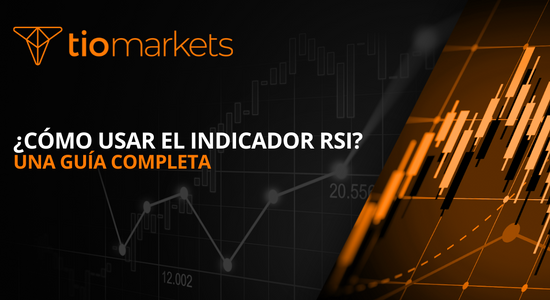Margin Trading Explained: What It Is and How to Trade | TIOmarkets
BY TIO Staff
|junio 7, 2024Margin trading represents a pivotal aspect of the financial markets, offering traders the capability to amplify their trading positions beyond their immediate capital. This comprehensive guide aims to demystify the concept of margin trading, elucidating its mechanics, benefits, and inherent risks, while providing insights into effective trading strategies within the margin trading framework.
Understanding Margin Trading
At its core, margin trading involves borrowing funds from a broker to invest in financial instruments, thereby enabling traders to open larger positions than their existing capital would otherwise allow. This leverage mechanism can significantly enhance potential profits but also increases the risk of amplified losses.
How Margin Trading Works
Margin trading is initiated when a trader deposits a fraction of the total trade value, known as the margin, which serves as collateral for the borrowed funds. The ratio of the trader's own funds to the borrowed amount is expressed as leverage (e.g., 10:1). This leverage amplifies both gains and losses relative to the trader's initial investment.
The requirement to maintain a minimum account balance, or maintenance margin, is crucial to continue holding the leveraged position. If the account balance falls below this threshold due to trading losses, the trader must deposit additional funds or close positions to meet the margin requirements, a process known as a margin call.
Benefits of Margin Trading
Margin trading offers several advantages, including the ability to magnify returns on investment, access to increased capital for trading, and the flexibility to open positions in both rising and falling markets. By leveraging their positions, traders can potentially achieve higher profits from relatively small price movements in the underlying assets.
Risks Associated with Margin Trading
While the prospects of high returns are enticing, margin trading carries significant risks. The principal risk is the potential for large losses, especially if the market moves unfavorably against the leveraged position. Additionally, the costs associated with borrowing funds, such as interest charges, can erode profits or exacerbate losses.
Strategies for Effective Margin Trading
Successful margin trading requires a well-thought-out strategy, combining rigorous risk management with a clear understanding of market dynamics. Below are key strategies and practices that can help mitigate risks while maximizing the potential benefits of margin trading.
Prudent Use of Leverage
One of the most critical aspects of margin trading is the judicious use of leverage. Traders should carefully consider the amount of leverage they employ, taking into account their risk tolerance and the volatility of the underlying assets. Lower leverage ratios may reduce potential profits but also limit losses, making them a prudent choice for risk-averse traders.
Effective Risk Management
Risk management techniques are essential to safeguard against significant losses in margin trading. Setting stop-loss orders can help limit losses by automatically closing positions once they reach a predetermined price level. Additionally, diversifying trading positions across different assets can reduce the risk of substantial losses from a single trade.
Continuous Market Analysis
Staying informed about market conditions and trends is vital for making informed trading decisions. Continuous analysis of economic indicators, market trends, and news events can help traders anticipate market movements and adjust their strategies accordingly.
Advanced Margin Trading Strategies
For experienced traders looking to delve deeper into margin trading, advanced strategies can offer additional insights and opportunities. One such strategy is pair trading, where traders simultaneously open long and short positions on correlated assets to hedge against market volatility. Another approach is margin arbitrage, which involves exploiting price differentials of the same asset across different exchanges to generate profits.
Pair Trading
Pair trading is a strategy that involves identifying two assets that are historically correlated and opening opposing positions on them. By going long on one asset and short on the other, traders aim to profit from the relative price movements between the two assets while minimizing overall market risk.
Margin Arbitrage
Margin arbitrage is a more complex strategy that requires a keen understanding of market inefficiencies and rapid execution capabilities. Traders engaging in margin arbitrage seek to capitalize on price differentials of the same asset across various exchanges by simultaneously buying low and selling high to exploit temporary market inefficiencies.
Conclusion
Margin trading offers traders the opportunity to significantly enhance their trading potential through the use of leverage. However, the increased potential for high returns comes with higher risks, making it imperative for traders to employ effective risk management strategies and maintain a disciplined approach to trading. By understanding the mechanics of margin trading and adhering to sound trading practices, traders can navigate the complexities of leveraged trading and capitalize on its benefits while minimizing its risks.
It's important to note that while margin trading can be a powerful tool for traders, it is not suitable for everyone. Traders should carefully consider their financial situation, investment objectives, and risk tolerance before engaging in margin trading. Additionally, traders should ensure they understand the terms and conditions of their brokerage's margin account, including interest rates, fees, and margin requirements, to make informed trading decisions.
Ready to Leverage Your Trading Potential?
Embark on your margin trading journey with TIOmarkets, a top-rated forex broker trusted by over 170,000 traders across 170 countries. Experience our online trading platform and diversify your portfolio with access to 300+ instruments across 5 markets, all with low fees. Enhance your trading skills with our comprehensive educational resources and step-by-step guides. Take the first step towards amplifying your trading opportunities by creating a Trading Account today.

Risk disclaimer: CFDs are complex instruments and come with a high risk of losing money rapidly due to leverage. You should consider whether you understand how CFDs work and whether you can afford to take the high risk of losing your money. Never deposit more than you are prepared to lose. Professional client’s losses can exceed their deposit. Please see our risk warning policy and seek independent professional advice if you do not fully understand. This information is not directed or intended for distribution to or use by residents of certain countries/jurisdictions including, but not limited to, USA & OFAC. The Company holds the right to alter the aforementioned list of countries at its own discretion.
Join us on social media

Behind every blog post lies the combined experience of the people working at TIOmarkets. We are a team of dedicated industry professionals and financial markets enthusiasts committed to providing you with trading education and financial markets commentary. Our goal is to help empower you with the knowledge you need to trade in the markets effectively.
Related Posts
undefined



